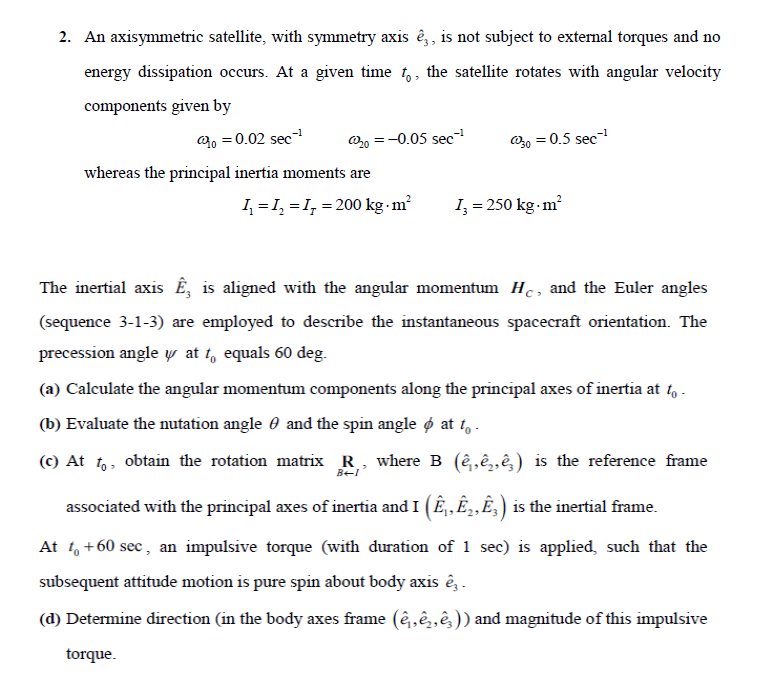Answered step by step
Verified Expert Solution
Question
1 Approved Answer
2. An axisymmetric satellite, with symmetry axis , is not subject to external torques and no energy dissipation occurs. At a given time to,

2. An axisymmetric satellite, with symmetry axis , is not subject to external torques and no energy dissipation occurs. At a given time to, the satellite rotates with angular velocity components given by 0 = 0.02 sec 20 = -0.05 sec @30 = 0.5 sec whereas the principal inertia moments are I =I=I=200 kg-m I = 250 kg.m The inertial axis is aligned with the angular momentum Hc, and the Euler angles (sequence 3-1-3) are employed to describe the instantaneous spacecraft orientation. The precession angle y at to equals 60 deg. (a) Calculate the angular momentum components along the principal axes of inertia at to - (b) Evaluate the nutation angle and the spin angle at t - (c) At to, obtain the rotation matrix R, where B () is the reference frame B+I associated with the principal axes of inertia and I () is the inertial frame. At to +60 sec, an impulsive torque (with duration of 1 sec) is applied, such that the subsequent attitude motion is pure spin about body axis e3. (d) Determine direction (in the body axes frame ()) and magnitude of this impulsive torque.
Step by Step Solution
There are 3 Steps involved in it
Step: 1

Get Instant Access to Expert-Tailored Solutions
See step-by-step solutions with expert insights and AI powered tools for academic success
Step: 2

Step: 3

Ace Your Homework with AI
Get the answers you need in no time with our AI-driven, step-by-step assistance
Get Started


